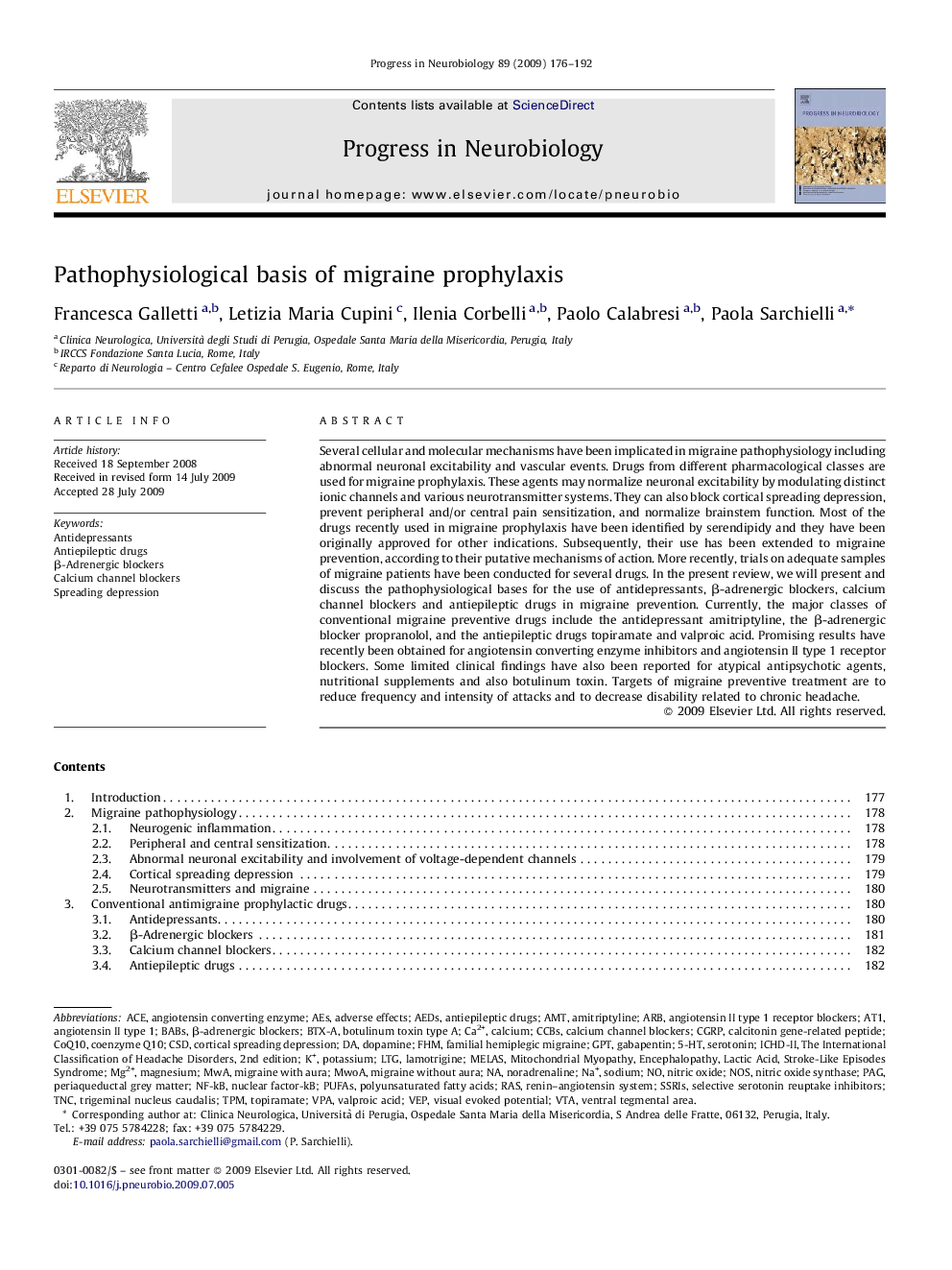| Article ID | Journal | Published Year | Pages | File Type |
|---|---|---|---|---|
| 4353793 | Progress in Neurobiology | 2009 | 17 Pages |
Several cellular and molecular mechanisms have been implicated in migraine pathophysiology including abnormal neuronal excitability and vascular events. Drugs from different pharmacological classes are used for migraine prophylaxis. These agents may normalize neuronal excitability by modulating distinct ionic channels and various neurotransmitter systems. They can also block cortical spreading depression, prevent peripheral and/or central pain sensitization, and normalize brainstem function. Most of the drugs recently used in migraine prophylaxis have been identified by serendipidy and they have been originally approved for other indications. Subsequently, their use has been extended to migraine prevention, according to their putative mechanisms of action. More recently, trials on adequate samples of migraine patients have been conducted for several drugs. In the present review, we will present and discuss the pathophysiological bases for the use of antidepressants, β-adrenergic blockers, calcium channel blockers and antiepileptic drugs in migraine prevention. Currently, the major classes of conventional migraine preventive drugs include the antidepressant amitriptyline, the β-adrenergic blocker propranolol, and the antiepileptic drugs topiramate and valproic acid. Promising results have recently been obtained for angiotensin converting enzyme inhibitors and angiotensin II type 1 receptor blockers. Some limited clinical findings have also been reported for atypical antipsychotic agents, nutritional supplements and also botulinum toxin. Targets of migraine preventive treatment are to reduce frequency and intensity of attacks and to decrease disability related to chronic headache.
